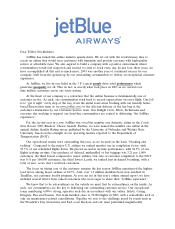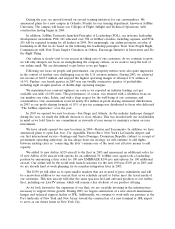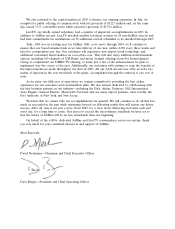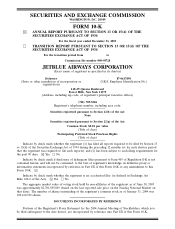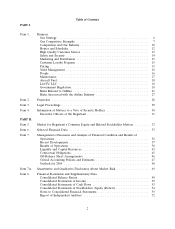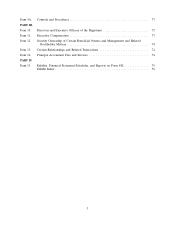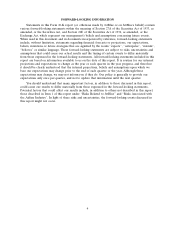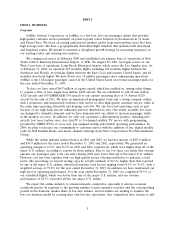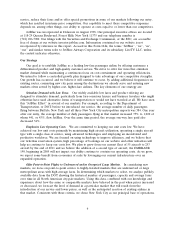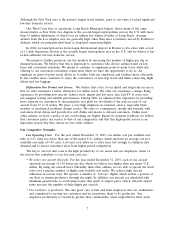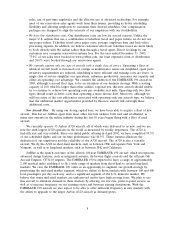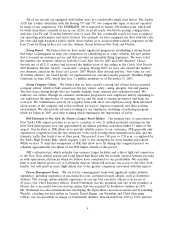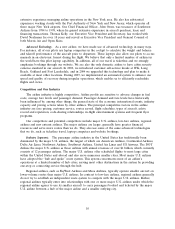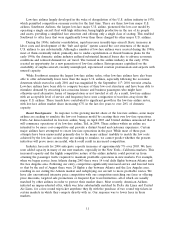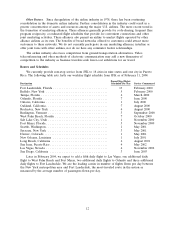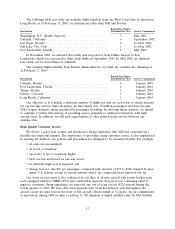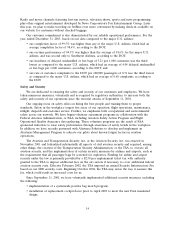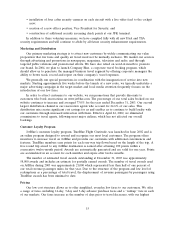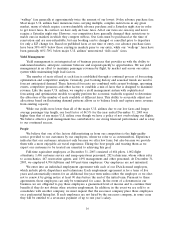JetBlue Airlines 2003 Annual Report Download - page 9
Download and view the complete annual report
Please find page 9 of the 2003 JetBlue Airlines annual report below. You can navigate through the pages in the report by either clicking on the pages listed below, or by using the keyword search tool below to find specific information within the annual report.service, reduce their fares and/or offer special promotions in some of our markets following our entry,
which has resulted in intense price competition. Our capability to meet these competitive responses
depends on, among other things, our ability to operate at costs equal to or lower than our competitors.
JetBlue was incorporated in Delaware in August 1998. Our principal executive offices are located
at 118-29 Queens Boulevard, Forest Hills, New York 11375 and our telephone number is
(718) 286-7900. Our filings with the Securities and Exchange Commission, or the SEC, are accessible
free of charge at our website investor.jetblue.com. Information contained on our website is not
incorporated by reference in this report. As used in this Form 10-K, the terms ‘‘JetBlue’’, ‘‘we’’, ‘‘us’’,
‘‘our’’ and similar terms refer to JetBlue Airways Corporation and its subsidiary, LiveTV, LLC, unless
the context indicates otherwise.
Our Strategy
Our goal is to establish JetBlue as a leading low-fare passenger airline by offering customers a
differentiated product and high-quality customer service. We strive to offer low fares that stimulate
market demand while maintaining a continuous focus on cost-containment and operating efficiencies.
We intend to follow a controlled growth plan designed to take advantage of our competitive strengths.
Our growth has occurred, and we believe it will continue to occur, by adding additional frequencies on
existing routes, connecting new city pairs among the destinations we already serve and entering new
markets often served by higher-cost, higher-fare airlines. The key elements of our strategy are:
Stimulate Demand with Low Fares. Our widely available low fares and product offering are
designed to stimulate demand, particularly from fare-conscious leisure and business travelers who might
otherwise have used alternative forms of transportation or would not have traveled at all. We have seen
this ‘‘JetBlue Effect’’ in several of our markets. For example, according to the Department of
Transportation, or DOT, before we introduced our service, the average number of daily passengers
flying between Buffalo, New York and all three New York City metropolitan airports was 584. One year
after our entry, the average number of daily passengers flying in that market increased 75% to 1,020 of
whom 441, or 43%, flew JetBlue. Over the same time period, the average one-way fare paid also
decreased 34%.
Emphasize Low Operating Costs. We are committed to keeping our unit costs low. We have
achieved our low unit costs primarily by maintaining high aircraft utilization, operating a single aircraft
type with a single class of service, using advanced technologies and employing an incentivized and
productive workforce. We are focused on using technology to improve efficiency, and we believe that
our ticketless reservation system, high percentage of bookings on our website and other initiatives will
help us continue to keep our costs low. We plan to grow from our current fleet of 55 aircraft to 253
aircraft by the end of 2011 and we believe the addition of a second type of aircraft, the EMBRAER
190, beginning in 2005 will not impact our ability continue to contain our operating costs. As we grow,
we expect some benefit from economies of scale by leveraging our current infrastructure over an
expanded operation.
Offer Point-to-Point Flights to Underserved and/or Overpriced Large Markets. In considering new
markets, we focus on point-to-point service to highly-traveled markets that are underserved or large
metropolitan areas with high average fares. In determining which markets to select, we analyze publicly
available data from the DOT showing the historical number of passengers, capacity and average fares
over time in all North American city-pair markets. Using this data, combined with our knowledge and
experience about how the same or comparable markets have behaved in the past when prices increased
or decreased, we forecast the level of demand in a particular market that will result from the
introduction of our service and lower prices, as well as the anticipated reaction of existing airlines in
that market. Consistent with these criteria, we chose New York City as our principal base of operations.
6

